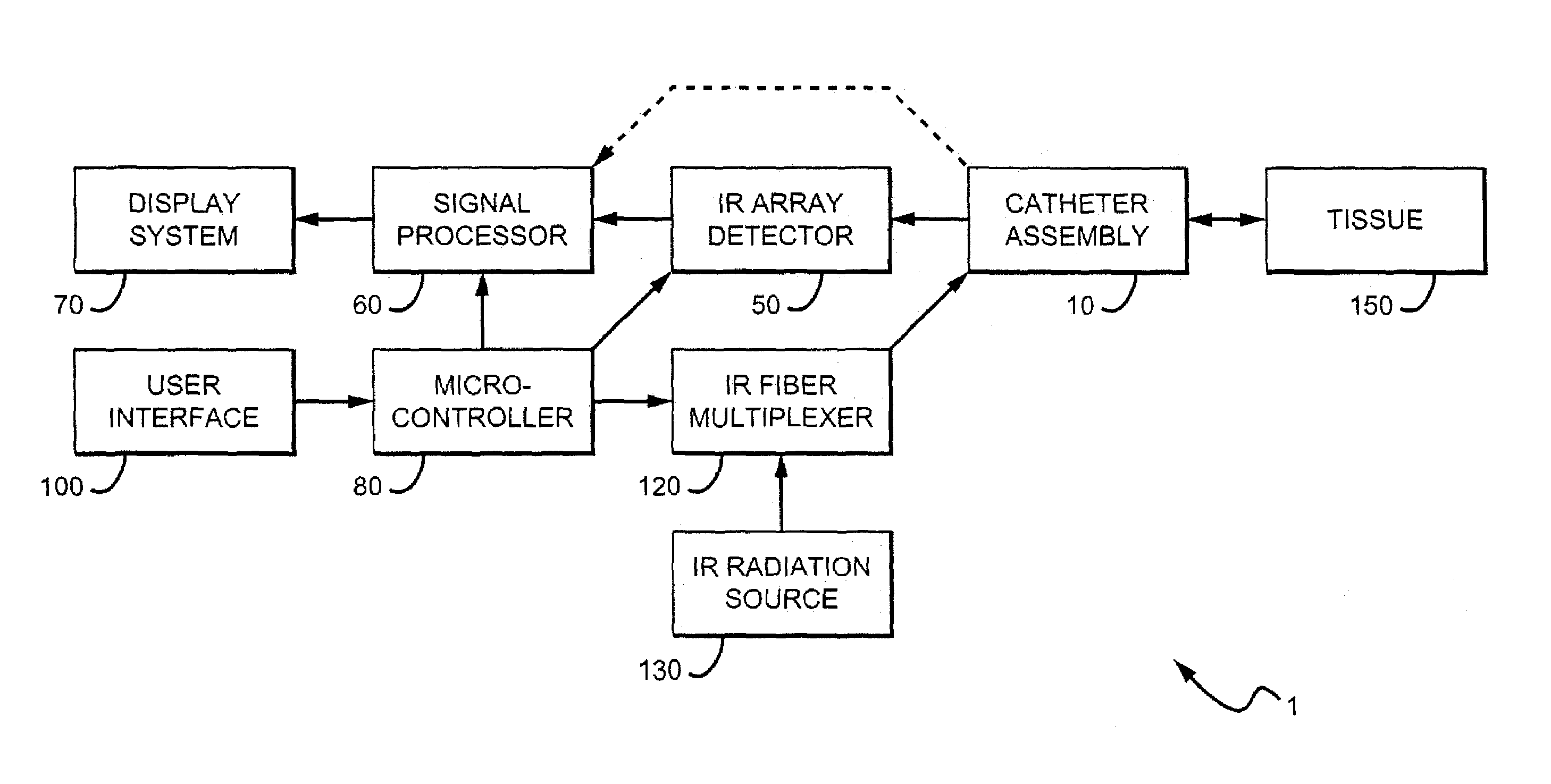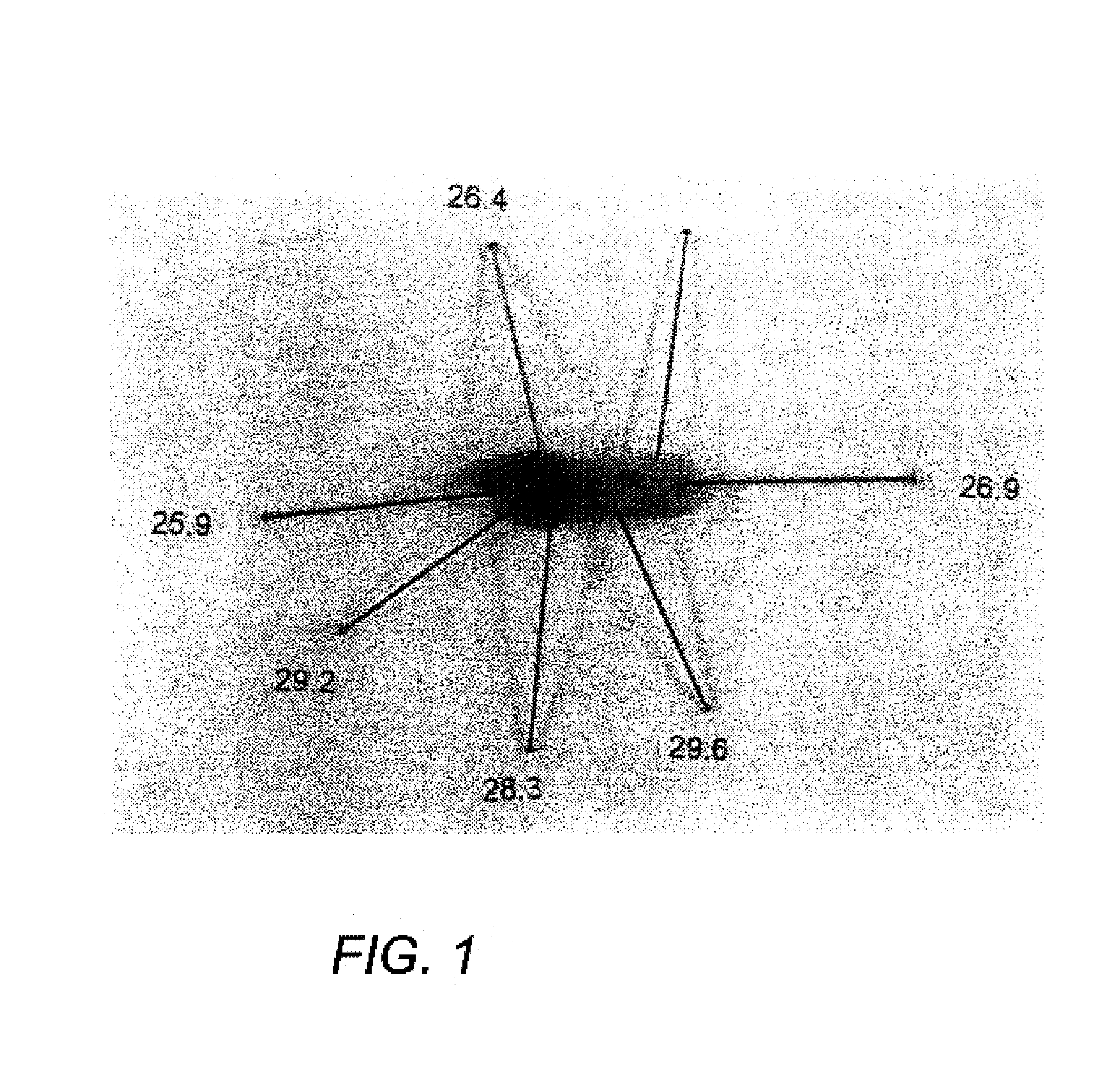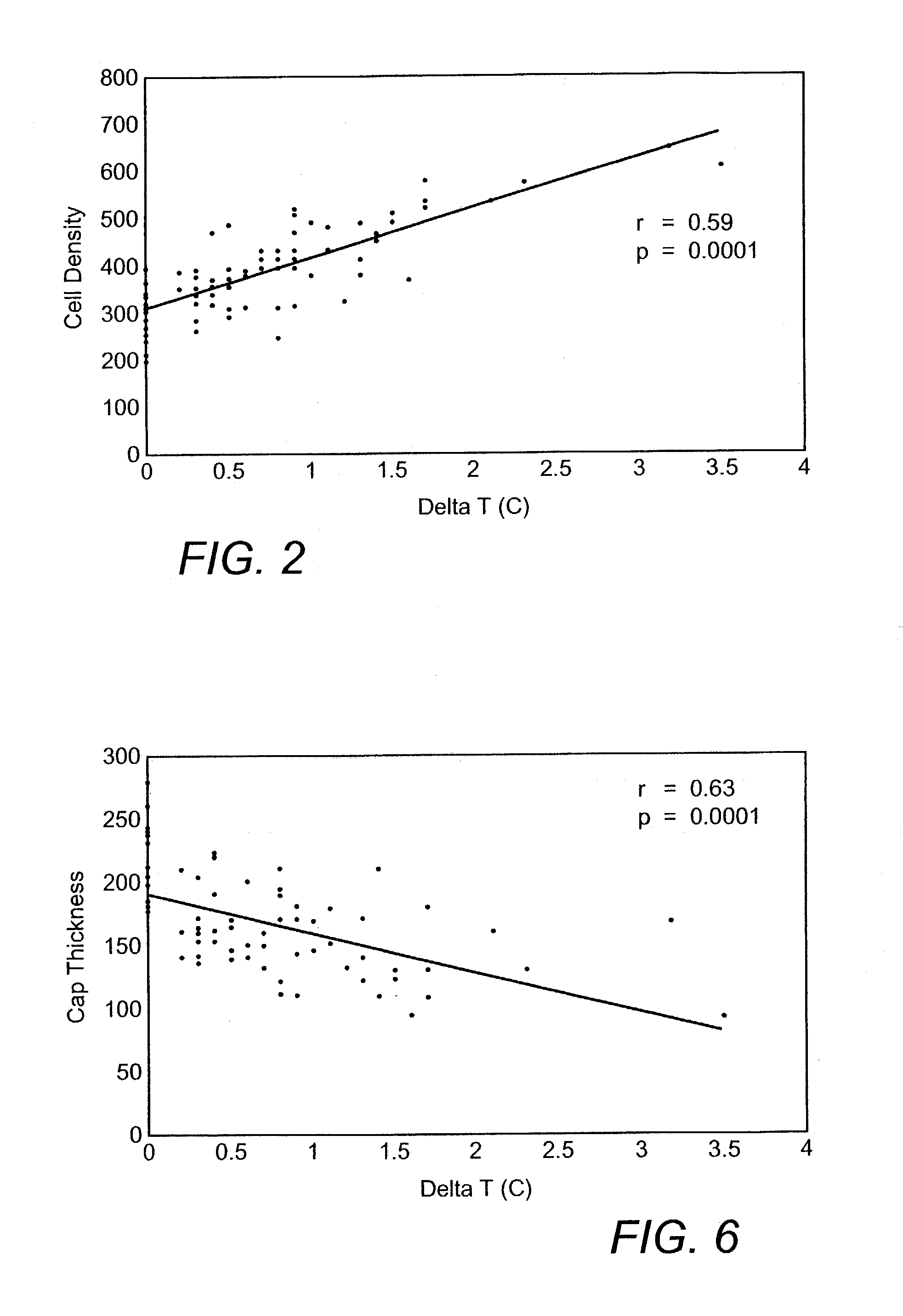Method and apparatus for detecting vulnerable atherosclerotic plaque
a technology of atherosclerotic plaque and detection method, which is applied in the field of methods and apparatus for detecting vulnerable atherosclerotic plaque, can solve the problems of hammering the prognosis and treatment of patients suffering from cardiovascular disease, plaques with inflamed surfaces or a high density of activated macrophages, and a thin overlying cap at risk of tirombosis, so as to reduce the risk of restenosis, reduce the risk of vasculopathy
- Summary
- Abstract
- Description
- Claims
- Application Information
AI Technical Summary
Benefits of technology
Problems solved by technology
Method used
Image
Examples
Embodiment Construction
[0133]In the description which follows, the inventors confirm and extend their earlier observations that approximately one-third of human atherosclerotic plaque specimens have temperature heterogeneity ranging from about 0.2° to 4.0° C. as measured in live, freshly excised carotid endaiterectomy specimens. FIG. 1 is a photomicrograph of one such specimen, with pins marking the temperatures of various regions of the plaque. The term “temperature heterogeneity” means that the surface temperature of a plaque is not uniform along its length and width. The term also refers to the temperature differences between certain plaque regions and other vessel sites or an average or ambient vessel wall temperature. The fact that human atherosclerotic plaque with measurable temperature heterogeneity has the morphological characteristics of plaque that is likely to ulcerate provides a new and sensitive way to detect and treat these dangerous plaques before myocardial infarction and its consequences ...
PUM
 Login to View More
Login to View More Abstract
Description
Claims
Application Information
 Login to View More
Login to View More - R&D
- Intellectual Property
- Life Sciences
- Materials
- Tech Scout
- Unparalleled Data Quality
- Higher Quality Content
- 60% Fewer Hallucinations
Browse by: Latest US Patents, China's latest patents, Technical Efficacy Thesaurus, Application Domain, Technology Topic, Popular Technical Reports.
© 2025 PatSnap. All rights reserved.Legal|Privacy policy|Modern Slavery Act Transparency Statement|Sitemap|About US| Contact US: help@patsnap.com



